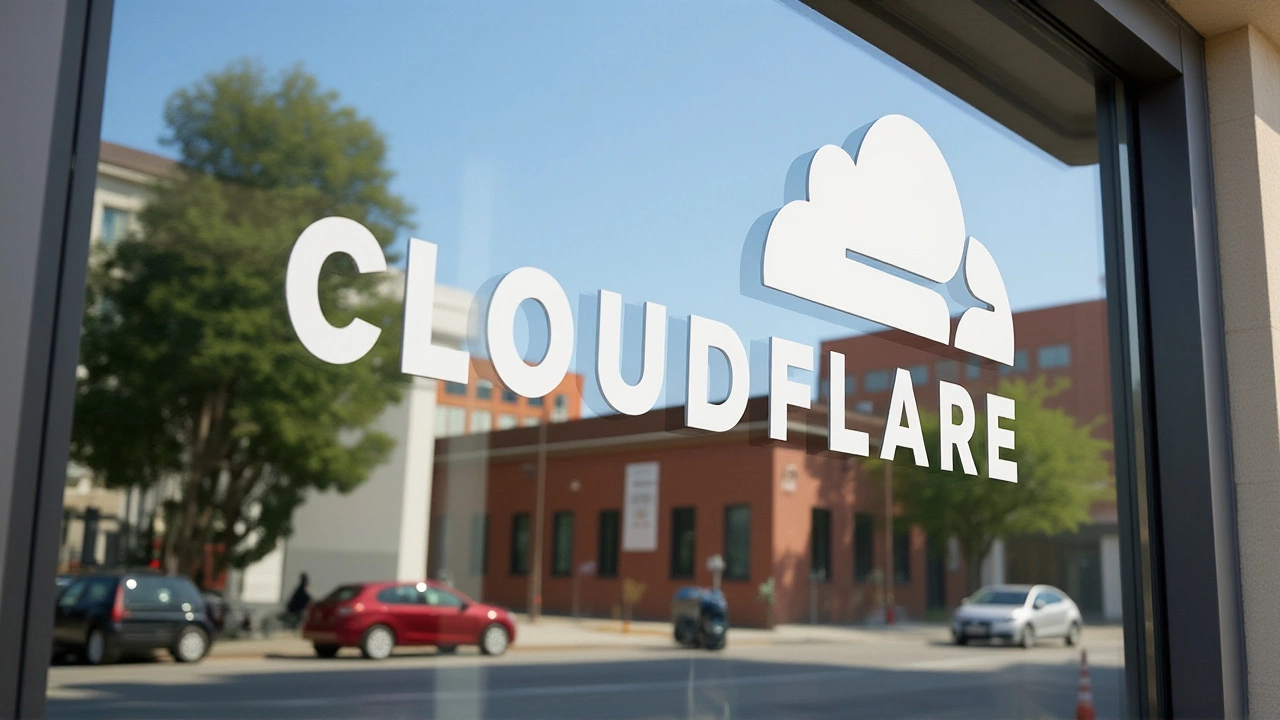At 11:30 UTC on November 18, 2025, the internet hiccuped—and then staggered. Cloudflare, Inc., the invisible backbone of millions of websites, suddenly stopped working. X, OpenAI's ChatGPT, Anthropic, and Shopify went dark. Users saw spinning wheels, 502 errors, and blank pages. For a few critical hours, the digital world held its breath. And here’s the twist: it wasn’t a cyberattack. It wasn’t a power surge. It was a single, misconfigured file.
How a Tiny Configuration Error Broke the Internet
The root cause? A Cloudflare engineer accidentally doubled the size of a configuration file used by the company’s Bot Management system—a critical piece of infrastructure that filters out automated traffic from real human users. Sounds harmless, right? Not when that system sits at the center of a web of interdependent services. As Gremlin, Inc., a San Francisco-based failure testing platform, later confirmed, the bloated file overwhelmed Cloudflare’s internal systems. Workers KV, which stores session data for Cloudflare Access, started timing out. Turnstile, the CAPTCHA-like tool used by the Cloudflare Dashboard, crashed. And because those services relied on each other, the failure didn’t stop—it spread.
It’s like pulling one thread from a sweater and watching the whole thing unravel. Cloudflare’s infrastructure spans 275+ cities across 100+ countries, serving over 20 million websites. When its internal plumbing failed, the ripple effect was global. Even Ookla’s Downdetector, the go-to site for tracking outages, went offline mid-crisis. Users couldn’t tell if the problem was theirs—or the whole internet.
When the Status Page Goes Dark
One of the most ironic moments? cloudflarestatus.com—Cloudflare’s own outage tracker—went down too. No updates. No explanations. Just a blank screen. Gremlin noted this was coincidental, not causal, likely due to the same backend collapse that took down other services. But for users, it felt like abandonment. Imagine calling your power company during a blackout… and getting a busy signal.
Meanwhile, Cisco ThousandEyes, a network intelligence firm owned by Cisco Systems, Inc., recorded a flood of HTTP 5XX errors—server-side failures—starting precisely at 11:30 UTC. Their data showed no network congestion, no DDoS attacks. Just silent, internal collapse. "It wasn’t the pipes," one analyst told TechRadar. "It was the water pressure regulator exploding."
Who Was Affected—and How Bad Was It?
The scale was staggering. Millions of users couldn’t log into their Shopify stores. Developers couldn’t deploy code via Cloudflare Workers. News sites relying on Cloudflare’s CDN went silent. E-commerce sales dropped abruptly. ChatGPT users saw "Service Unavailable" messages just as they were asking complex questions. Even some government and healthcare portals using Cloudflare for security were unreachable.
"Large parts of the internet were taken down," TechRadar reported. That’s not hyperbole. Cloudflare handles roughly 15% of all web traffic globally. When it stumbles, the rest of the web stumbles with it. And unlike a single server going down, this was a systemic failure—a perfect storm of architectural dependency.
Why This Matters Beyond the Tech Elite
Most people don’t know what Cloudflare does. But they’ve felt it. Every time a website loads fast, every time a login screen blocks a bot, every time a blog stays up during a traffic spike—that’s Cloudflare. This outage wasn’t just a tech problem. It was a reminder: we’ve built a world on invisible infrastructure. And when those invisible pieces fail, we all pay the price.
Companies like Shopify and OpenAI had to scramble. Customer support lines flooded. Social media exploded with confusion. One Shopify merchant in Toronto lost over $23,000 in sales during the outage. "I had a product launch scheduled," she told a local news outlet. "I didn’t even know my site was down until a customer called me on my cell phone."
What Happened After the Lights Came Back On
By late afternoon UTC on November 18, 2025, services began recovering. Cloudflare engineers rolled back the faulty configuration. Workers KV stabilized. Turnstile rebooted. The Dashboard returned. But the real damage wasn’t just downtime—it was trust. The Cloudflare Status Page eventually came back online, showing "No incidents reported"—with its next scheduled maintenance notice for November 21, 2025, in Osaka, Japan. A quiet, almost eerie footnote.
Matthew Prince, Cloudflare’s co-founder and former CEO (who still advises the company), published a detailed post-mortem. "We assumed our systems could handle scale," he wrote. "We didn’t assume they could handle complexity."
What’s Next for Internet Reliability?
Gremlin’s analysis has become required reading in DevOps circles. "A single failure in any one [service] can have a cascading effect," their report concluded. The industry is now reevaluating service dependencies. Companies are building "blast radius" controls—limits on how far one failure can spread. Cloudflare itself has introduced new safeguards, including automated file size limits and mandatory peer reviews for critical configuration changes.
But here’s the uncomfortable truth: no system is immune. The internet isn’t a collection of independent parts. It’s a living, breathing network of dependencies. And as we rely more on cloud providers, our exposure grows.
Frequently Asked Questions
How long did the Cloudflare outage last on November 18, 2025?
The exact duration wasn’t officially confirmed, but based on outage tracking data from Cisco ThousandEyes and Downdetector, the most severe disruption lasted between 3.5 and 4.5 hours, beginning at 11:30 UTC and largely resolving by 16:00 UTC. Some services, like the Cloudflare Dashboard, took longer to fully stabilize due to cascading dependencies.
Why did Cloudflare’s own status page go down during the outage?
The status page went offline because it relied on the same backend infrastructure—Workers KV and Turnstile—that failed during the configuration error. It wasn’t targeted or hacked; it was collateral damage. This highlights a dangerous flaw: if your outage tracker depends on the same system that’s failing, you lose visibility precisely when you need it most.
Which other major services were impacted besides X and ChatGPT?
Beyond X, ChatGPT, and Shopify, major services including Discord, Adobe Creative Cloud, Twitch, and even some government portals using Cloudflare’s security services experienced disruptions. Over 20 million websites rely on Cloudflare, and hundreds of thousands saw increased error rates. Even fintech apps and API-driven platforms that use Cloudflare for DDoS protection were affected.
Could this happen again? What’s being done to prevent it?
Yes, it could—unless architectures change. Cloudflare has since implemented automated file size limits, mandatory multi-engineer reviews for core configuration changes, and new "circuit breaker" protocols that isolate failing services before they cascade. Industry-wide, companies are now modeling failure paths more aggressively, treating dependency chains like electrical grids: if one fuse blows, the rest shouldn’t follow.
Is Cloudflare still reliable after this incident?
Cloudflare remains one of the most critical and resilient infrastructure providers globally. This outage was an extreme edge case, not a pattern. But it exposed a blind spot: complexity is the new vulnerability. Many experts now say reliability isn’t about uptime—it’s about how fast you recover when the inevitable happens. Cloudflare’s response, while delayed, was ultimately thorough.
What role did Matthew Prince play in the aftermath?
Though no longer CEO, Matthew Prince, Cloudflare’s co-founder, authored a widely cited post-mortem analysis that helped shape the company’s recovery strategy. His insights on architectural fragility were referenced by Gremlin and became a teaching case in engineering schools. He emphasized that "scale without sanity is a recipe for collapse," urging the industry to prioritize simplicity over feature sprawl.


